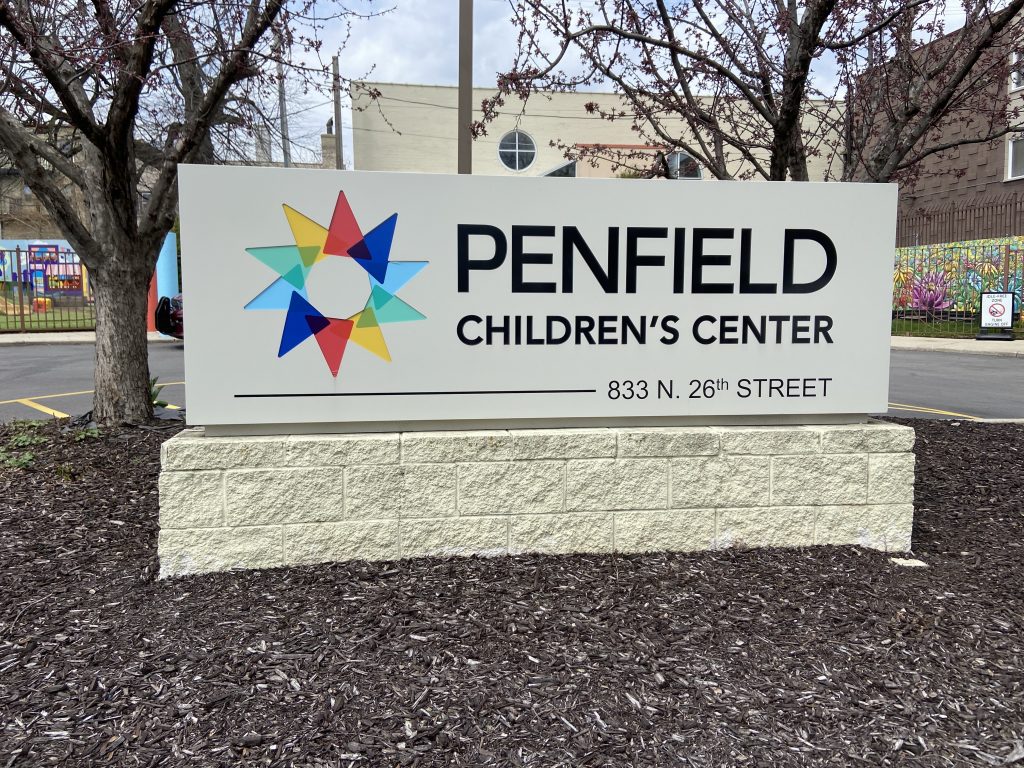Early Childhood Programs Declining in Milwaukee – Urban Milwaukee

Report on the Funding Crisis of Milwaukee’s “Birth to 3” Program and its Impact on Sustainable Development Goals
Introduction and Program Overview
This report examines the financial challenges facing the “Birth to 3” early childhood intervention program in Milwaukee County. The program is a federally mandated service under the Individuals with Disabilities Education Act (IDEA) designed to provide diagnosis and therapy for children from birth to three years of age who have developmental delays and disabilities. This period is recognized as a critical window for brain development, and the program serves as the primary support system before children are eligible for public special education.
Alignment with Sustainable Development Goals (SDGs)
The “Birth to 3” program is intrinsically linked to the achievement of several key United Nations Sustainable Development Goals (SDGs). The current funding crisis directly threatens progress in these areas:
- SDG 3: Good Health and Well-being: The program is a fundamental component of the public health infrastructure, providing essential early-stage therapeutic interventions that promote healthy lives and well-being for vulnerable children.
- SDG 4: Quality Education: By addressing developmental challenges early, the program ensures children are better prepared for future learning, supporting the goal of inclusive and equitable quality education for all.
- SDG 10: Reduced Inequalities: The service specifically targets inequality by providing critical support to children with disabilities, ensuring they have the opportunity to reach their full potential and are not left behind.
- SDG 16: Peace, Justice and Strong Institutions: Effective early intervention is a preventative measure that can reduce future societal costs, including those related to the criminal justice system. The funding shortfall highlights an institutional failure to uphold a federal mandate.
Analysis of the Funding Deficit and Systemic Challenges
Chronic Underfunding from Federal and State Levels
A primary challenge is the persistent underfunding of the IDEA mandate at the federal level, a problem compounded by stagnant state funding. This fiscal pressure is transferred to Milwaukee County, which is legally responsible for administering the program, and its contracted service providers.
Financial Discrepancies and Local Impact
The gap between program costs and available public funds is significant.
- Statewide Funding Gap: An estimated $10 million in additional annual funding is required to stabilize the program across Wisconsin.
- Milwaukee County Gap: The local funding deficit is approximately $2 million annually.
- Recent County Action: The Milwaukee County Board allocated an additional $450,000 in the 2026 budget, a partial measure to address the shortfall.
Operational Consequences for Service Providers
The funding deficit has created an unsustainable operational environment for community-based providers.
- Provider Attrition: The number of service providers in Milwaukee County has diminished to only three: Curative Care Network, Penfield Children’s Center, and St. Francis Children’s Center.
- Rising Demand, Fixed Contracts: Providers report that while enrollment is growing, their contracts from the county are fixed, forcing them to cover the costs of increased service volume.
- Resource Diversion: Financial instability forces organizations to divert resources that could otherwise be used for program expansion, outreach, and enhanced care.
Impact on SDG Attainment in Milwaukee County
Service Accessibility and Equity (SDG 10)
The underfunding directly undermines the goal of reducing inequalities by creating barriers to access for eligible children.
- Data from providers suggests that only 27% of children eligible for the “Birth to 3” service in Milwaukee County are currently receiving it.
- A lack of funds for robust outreach, education, and developmental assessment campaigns means a majority of children in need are not being identified or served.
Long-Term Social and Economic Implications (SDG 3, 4, 16)
Failure to adequately fund early intervention has profound long-term consequences that impede progress on health, education, and justice-related SDGs.
- Missing the critical 0-3 age window for intervention can compromise a child’s long-term health and educational outcomes, increasing the need for more intensive special education services later.
- Research and provider testimony indicate that untreated developmental delays can manifest as behavioral challenges, potentially leading to future contact with the criminal justice system.
- Investing in the “Birth to 3” program is a preventative strategy that supports long-term well-being, promotes educational equity, and reduces future public expenditures.
Analysis of SDGs, Targets, and Indicators
1. Which SDGs are addressed or connected to the issues highlighted in the article?
- SDG 3: Good Health and Well-being
- SDG 4: Quality Education
- SDG 10: Reduced Inequalities
- SDG 16: Peace, Justice, and Strong Institutions
2. What specific targets under those SDGs can be identified based on the article’s content?
-
SDG 3: Good Health and Well-being
- Target 3.8: Achieve universal health coverage, including financial risk protection, access to quality essential health-care services and access to safe, effective, quality and affordable essential medicines and vaccines for all.
Explanation: The article focuses on the “Birth to 3” program, which provides essential therapy and early intervention for children with disabilities. The funding struggles and the fact that only 27% of eligible children are served highlight a gap in achieving universal access to these quality essential health-care services.
- Target 3.8: Achieve universal health coverage, including financial risk protection, access to quality essential health-care services and access to safe, effective, quality and affordable essential medicines and vaccines for all.
-
SDG 4: Quality Education
- Target 4.2: By 2030, ensure that all girls and boys have access to quality early childhood development, care and pre-primary education so that they are ready for primary education.
Explanation: The “Birth to 3” program is explicitly described as an “early childhood program” and an “early intervention program” focusing on the first three years of life, which is a “critical period for brain development.” This directly aligns with the goal of providing quality early childhood development and care.
- Target 4.2: By 2030, ensure that all girls and boys have access to quality early childhood development, care and pre-primary education so that they are ready for primary education.
-
SDG 10: Reduced Inequalities
- Target 10.2: By 2030, empower and promote the social, economic and political inclusion of all, irrespective of age, sex, disability, race, ethnicity, origin, religion or economic or other status.
Explanation: The program is designed to “diagnose and provide therapy for children with disabilities and development delays.” By providing this crucial support, the program aims to ensure these children are not left behind, thereby promoting their inclusion and reducing inequalities from the earliest stage of life. - Target 10.3: Ensure equal opportunity and reduce inequalities of outcome…
Explanation: The underfunding of a federally mandated program for children with disabilities creates an inequality of outcome. The article notes that without this intervention, children may face behavioral challenges later in life, demonstrating how the lack of service perpetuates unequal opportunities.
- Target 10.2: By 2030, empower and promote the social, economic and political inclusion of all, irrespective of age, sex, disability, race, ethnicity, origin, religion or economic or other status.
-
SDG 16: Peace, Justice, and Strong Institutions
- Target 16.6: Develop effective, accountable and transparent institutions at all levels.
Explanation: The article details a systemic failure of institutions, stating that the “federal government has historically underfunded it, and the state has not raised its funding support.” The quote, “from the federal to the state on down, everyone’s passing the buck,” directly points to a lack of accountability in the institutions responsible for administering this federally mandated program.
- Target 16.6: Develop effective, accountable and transparent institutions at all levels.
3. Are there any indicators mentioned or implied in the article that can be used to measure progress towards the identified targets?
-
Indicators for Access and Coverage (Targets 3.8, 4.2, 10.2)
- Proportion of eligible children receiving early intervention services: The article explicitly states that providers’ data “suggests only 27% of children eligible for the service are receiving it.” This is a direct quantitative indicator of the program’s reach and the gap in service delivery.
- Number of service providers: The article notes that many providers have dropped out of the program in Milwaukee County, and “There are only three providers left.” A change in this number would indicate progress or regression in service capacity.
-
Indicators for Institutional Support and Funding (Target 16.6)
- Level of public funding vs. identified need: The article provides specific financial data that can be used as indicators.
- The annual funding gap in Milwaukee is “approximately $2 million.”
- The statewide funding gap is “approximately $10 million more a year.”
- The Milwaukee County Board added “approximately $450,000,” which can be measured against the $2 million need.
- Level of public funding vs. identified need: The article provides specific financial data that can be used as indicators.
4. Table of SDGs, Targets, and Indicators
| SDGs | Targets | Indicators |
|---|---|---|
| SDG 3: Good Health and Well-being | 3.8: Achieve universal health coverage, including… access to quality essential health-care services… |
|
| SDG 4: Quality Education | 4.2: Ensure that all girls and boys have access to quality early childhood development, care and pre-primary education… |
|
| SDG 10: Reduced Inequalities | 10.2: Empower and promote the social… inclusion of all, irrespective of… disability…
10.3: Ensure equal opportunity and reduce inequalities of outcome… |
|
| SDG 16: Peace, Justice, and Strong Institutions | 16.6: Develop effective, accountable and transparent institutions at all levels. |
|
Source: urbanmilwaukee.com
What is Your Reaction?
 Like
0
Like
0
 Dislike
0
Dislike
0
 Love
0
Love
0
 Funny
0
Funny
0
 Angry
0
Angry
0
 Sad
0
Sad
0
 Wow
0
Wow
0





















































.jpg.webp?itok=0ZsAnae9#)


























